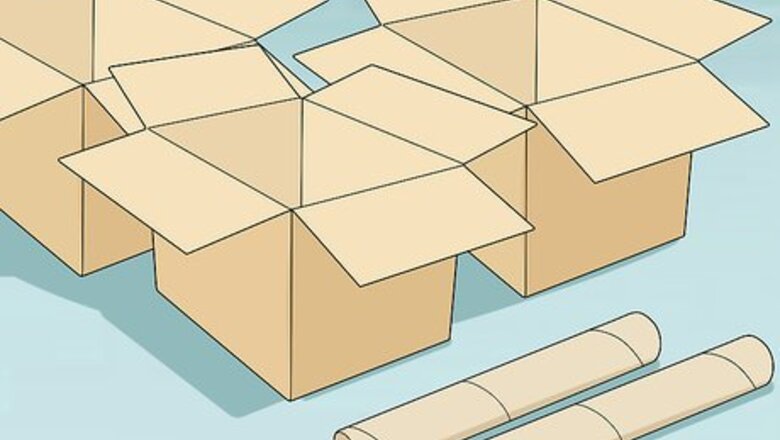
views
Building a Cardboard Playground
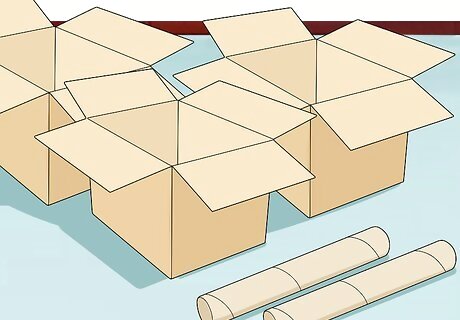
Gather boxes and tubes. You will want as many sturdy boxes of different sizes as you can find. Cardboard boxes can be obtained for free from membership warehouse stores, liquor stores, furniture stores, discount stores, copy shops, toy stores, or grocery stores. Cardboard tubes can be salvaged from paper towels, wrapping paper, mailing tubes, and bolts of fabric.
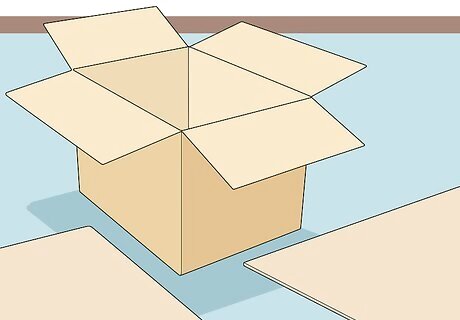
Gather materials to hold the boxes together. It is important to pick appropriate materials for your cat. For example, if your cat likes to chew cardboard, don't use tape or glue. Pick the materials according to whether you want to be able to disassemble some or all of the boxes after you are finished or whether you want some or all of the boxes to be permanently connected.
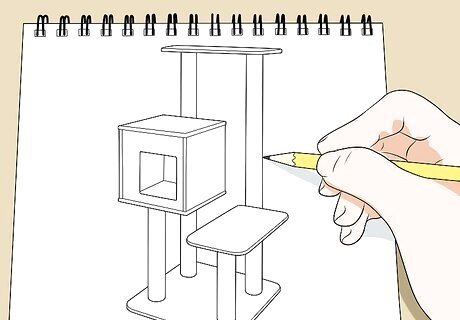
Design the structure. Think about a shape that would fit well in your house and would provide comfort and entertainment to your cat. Decide whether you want different "rooms" to have different purposes: you might build an observation deck, for instance, and designate one room for sleeping and hiding, and one room for snacking. Take the future location of your structure into account. If it is by a window, you will want the cat structure to have plenty of windows, and you will want to build it so that it does not block your light. You might choose to build next to a wall that will provide support, or it may be freestanding, in which case you will need to reinforce your structure. Experiment with different ways of arranging the boxes: Put some boxes inside of others. Connect two or more groups of boxes using single, long boxes as tunnels or bridges. Make steps using a series of smaller boxes. Experiment with different size windows, doors, and trap doors. Draw windows, doors, or trap doors first before cutting. Do not build your jungle gym more than four levels high. The higher you build your jungle gym, the wider the base should be in each direction. Make an exit plan. While designing your jungle gym, make an "emergency hatch" so that you can access your cat without completely tearing apart and destroying the jungle gym. This is important when you need to give your cat medicine or take them to the vet. If you have multiple cats, you will want to be able to remove them in case they are fighting inside their new space. If your cats are new or if they are needy, they may decide they are trapped and need to be rescued. Design multiple exits in each box so your cats cannot corner one another.
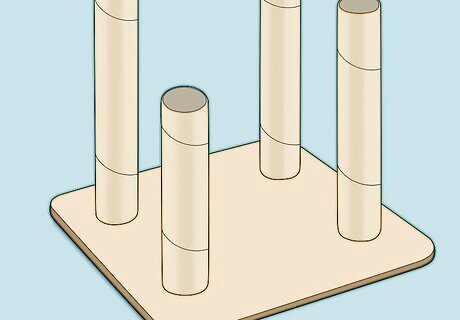
Get creative with cardboard tubes. Use cardboard tubes as support posts in vertical structures. Cardboard tubes can also be used to create see-saws; fold one or two in half and place inside another for stability, then tape the tube to the bottom of a long, narrow box with holes cut into it. Kittens especially will be entertained by the unexpected rocking as they move from one end to another.
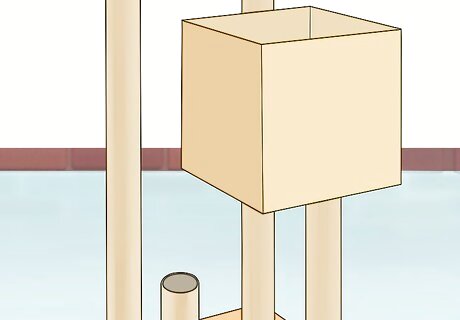
Connect the boxes. It is easiest to do this in the room where the play equipment will stay. After it is assembled, it can be difficult to maneuver play equipment around corners, up or down stairs, or through doorways. Connect the boxes by building tunnels out of smaller boxes, and by gluing and taping everything in place. Make it sturdy. If you build the play equipment more than a couple of boxes high, you will need to reinforce the first couple of levels with something like cut pieces of cardboard. Cut cardboard to fit along the sides of each box and wedge it into the corners. Reinforce the floors and roof of the boxes with flat pieces of cardboard. Check for safety before you let your cats play on the structure. Try kicking and shaking your structure to test its sturdiness. Place objects the weight of your cat or cats together in each section of the structure to make sure it will hold them easily.
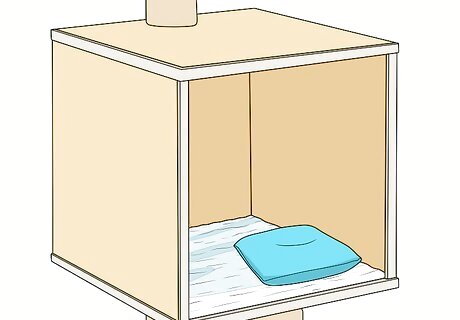
Make it cozy. Add soft surfaces to make the play equipment comfortable for your cat. Use materials that can be removed for cleaning. Cat size pillows can be made from old socks, potholder mitts, pillowcases, hand towels, shirts, or curtains. Sew up all but one side of your cloth, then stuff with cotton or other washable material and sew closed.
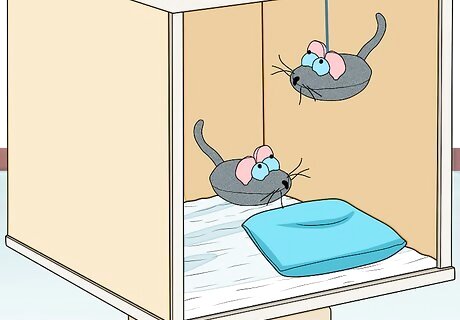
Decorate with toys. Stuff socks with catnip, or tie knotted rope so it dangles. Be sure to avoid toxic materials and choking hazards. Add a flutter "curtain" over a window or doorway for your cat to bat. If your cat likes mirrors, try gluing one to a box's inside wall.
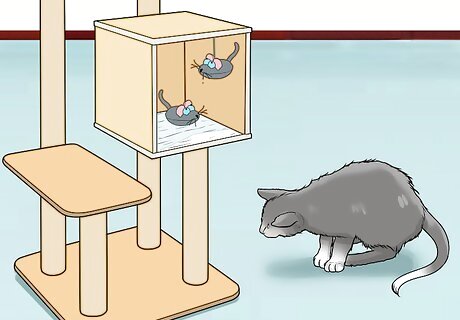
Introduce your cat to the play equipment. Your cat might not instantly be attracted to its new toy. Catnip placed inside could break the ice. Put familiar toys or blankets inside the entrance room to encourage your cat to explore. Try temporarily placing your cat's food dish inside the cat house. If the structure isn't appealing where it is, try moving it nearer a window or under a sunbeam. Cats may ignore a structure for days or even weeks before they try it out. Give them time.
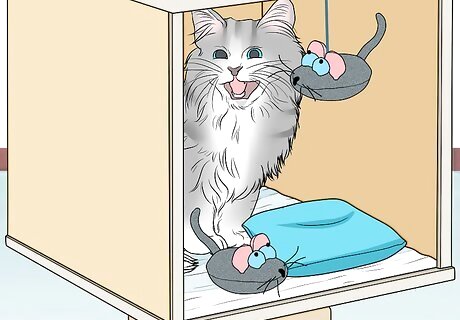
Observe your cats at play. Watch your cats as they enjoy their jungle gym to learn what they like and what elements of your design work best. Eventually each cardboard jungle gym will start to sag and wear out. Use your observations to design your next cat jungle gym.
Converting Furniture to Cat Furniture
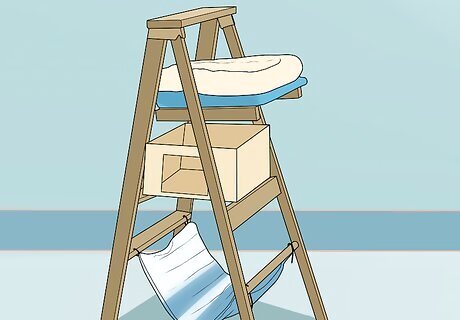
Build a stepladder cat tree. You can buy a new stepladder, or you can use a ladder you have lying around. Measure the ladder and the place you plan to store your tree house. If you are using an old ladder, clean it thoroughly before bringing it into your home. You might want to paint your ladder a cheerful color. Add boxes. Lash or glue a box or two to some of the steps. Add a pillow. You may want to string up a sort of hammock between the sides of your ladder and put a pillow on it for your cat to sit. If your cat doesn't like rocking, fix a piece of wood or a platter between the rungs. Make sure your ladder is balanced. If your cat or cats are sitting on one side, your ladder should not fall over or collapse on them.
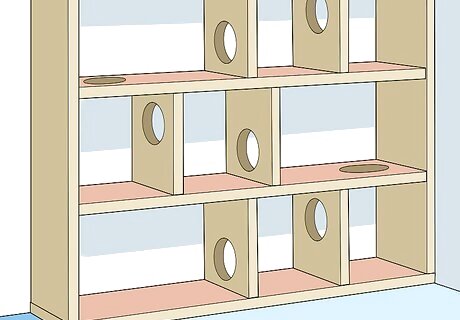
Convert a bookcase. Pick a bookcase you are not using, or buy a new one. If it is sturdy enough to stand on its own, you do not have to modify it much. Otherwise, use furniture straps to tie it to the wall. Cut holes in each shelf large enough for your cat to slink through. Cut carpet squares to fit each shelf, and fix them in place with glue, nails, or staples. Buy a low-pile carpet to discourage your cats from chewing it. Cut the carpet into squares or rectangles to fit the shelves.
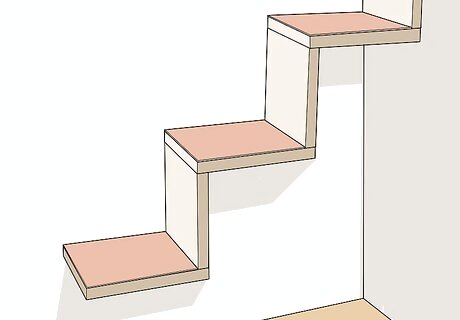
Buy wall shelves for your cats. Sturdy shelves can be fixed to your walls in "steps" or zig-zags for your cats to climb. Measure your cat's reach and leave the right amount of space for your cat to get from shelf to shelf. Attach cloth or carpet squares to the shelves so your cats can get a grip on them. Add a pillow to one or two of the shelves for cat comfort. Glue, nail, or staple everything you are putting on the shelves, as your cat may knock them off otherwise.














Comments
0 comment